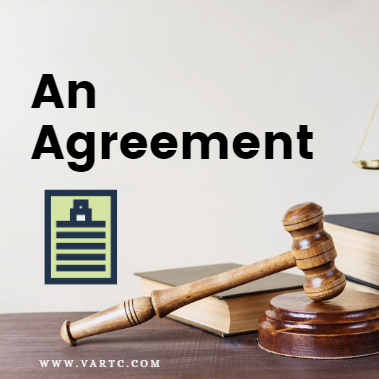Partnership Firm
Partnership Firm
The Indian Partnership Act of 1932 governs the law relating to partnership firms in India. This act details the obligations and rights of partners, as well as the legal relationships between partners and third parties that arise incidentally to the formation of a partnership. The act is instrumental in establishing the roles of partners and partnership firms in legal and contractual relations arising from and during the course of partnership firm operations. This article provides a comprehensive overview of the various aspects of operating a partnership firm in India.

Partnership
- All the people involved need to agree to it.
- They gotta agree to share the profits they mIf you want to start a partnership, you gotta know the rules laid out in Section 4 of the Indian Partnership Act. Basically, a partnership is when a bunch of people agree to run a business together and share the profits. There are three main things that need to happen for a partnership to be legitake.
- They need to run the business together or at least have one person running it for all of them. So, those are the rules -have all three for a partnership to be a thing.
Essential Elements of a Partnership
Some compulsion for the formation of a Partnership firm are listed below with a brief explanation.

An Agreement
Partnerships are a great way to do business with like-minded individuals. It’s important to note that partnerships are the result of an agreement between two or more persons, and they can only arise from a contract and not from status. This sets them apart from a Hindu Undivided Family carrying on family business. Partnerships are a voluntary and contractual relationship, which means they are based on mutual agreement.
This agreement can be express or implied from the Partnership Act this is consistent course of conduct can show a mutual understanding between the partners. It doesn’t matter if the agreement is in oral or written form, matters is that there is a clear understanding between the partners. If you’re looking to do business with others, a partnership is a great way to go about it.

Sharing Profit of Business
Sharing profits is an important aspect of partnerships, but it’s not as simple as it may seem. Two propositions need to be considered in this regard. The term ‘business’ generally encompasses every trade, occupation, and profession. The existence of a business is crucial because the motive of a business is the “acquisition of gains” that leads to the formation of a partnership. Therefore, there can be no partnership where there is no intention to carry on a business and share the profits obtained from it. For instance, co-owners who share rent from a piece of land are not considered partners because there is no business involved. Similarly, a charitable institution or club cannot be called a partnership. However, a Joint Stock Company may emerge as a partnership for non-economic purposes. It’s essential to understand these propositions before entering into a partnership.
In addition to the existence of a business, an agreement concerning the sharing of profits is also essential for a partnership to form. An agreement to share the losses is not considered as an essential element. It’s worth mentioning that in the event of damages unless agreed otherwise, they must be borne in a profit-sharing ratio. It’s always important to keep these factors in mind while forming a partnership agreement to ensure a smooth & mutually beneficial partnership.
Running the Business
The third requirement for a partnershipin any business must be carried on by all the partners or by one or more of the partners acting for all. This is the principle of the partnership law. In the course of the firm's business, an act of one partner is in fact an act of all partners. A partner carrying on a business is the principal and also the agent for all the other partners. Therefore, it should be confirmed that the real test of a partnership is a mutual agency not by sharing of profits. Stronger evidence can rebut the Prima Face evidence of sharing of benefits. Which can be measured by proving that there is no mutual agency.
Difference between Partnership and Firm
Individuals who have entered into a partnership in any business with one another are called Partners individually. The partners may be called collectively the business is carried on is called the name of the Firm. A partnership is mainly an abstract legal relationship between the partners. A firm is a concrete object intending the collective entity for all the partners. Thus, a partnership is an invisible bind that holds the partner collectively, and a firm is the visible form of this partnership which is, therefore, bound together.
Types of Partnership
There are two types of partnership which are as follows.
Partnership at will
A partnership by will, is a partnership where there is no provision made by contract between the partners & for the duration of their partnership, or the determination of their partnership.
Particular Partnership
A specific partnership refers to a situation where a person becomes a partner with another individual for a particular business enterprise or project, such as the construction of a road or laying of a railway line. This type of partnership might be ends upon completion of the particular task for which it was initially formed.
Types of Partners
The different classes of partners can be derived on the basis of extent of liability in a partnership firm.
Active/ Actual/ Ostensible Partner
When a partner of a partnership firm,
The partner who actively participated in the management of the partnership corresponds the other partners for all actions taken in the course of the business. When a partner retires, they must give public notice to be absolved of any liability for actions taken by the other partners after their retirement.
Sleeping or Dormant Partner
A Sleeping or a Dormant Partner is a partner who is a partner by agreement; & who does not actively take part in the conduct of the business.
These partners share their profits & losses which are liable to third parties for the business carried out by the partnership firm.
Nominal Partner
A nominal partner is an individual who adds his name to the partnership form. The person is considered a nominal partner when they don’t have any real interest in the business. This kind of a partner is not entitled to share the nets income of the firm. This partner didn’t invested and takes part in how the business is run at the firm. As in this a partner is liable to third parties for all the actions taken by the their firm.
Sub-Partner
A sub-partner is a partner who agrees to share their profits in a partnership with someone who is outside of firm. The sub-partner is not responsible for any debts, incurred by the partnership and does not have any rights to manage the firm.
Incoming partners
This refers to a partner who is added with an existing partnership & the permission of all the current partners in the firm. The new partner is not responsible for any actions the partnership took before joining.
Outgoing Partner
An outgoing partner is someone who leaves the partnership while the remaining partners continue to run the business. The outgoing partner remains responsible to third parties for all actions taken by the company until a public notice of their retirement is issued.
Partner by holding out (Section 28)
Partnership by holding out is also called as, a partnership by estoppel. This occurs when an individual presents themselves as a partner or allows others to do so. In such a case, the individual is prevented from denying the role they have assumed and upon which creditors may have relied. If an individual represents themselves or knowingly allows themselves to be represented as a partner in a partnership firm (when they are actually not), they will be held liable like a partner in the firm to anyone who gave credit to the firm based on such a representation.
An individual may themselves, by their words or behavior has induced other to believe that they are a partner or they may have allowed others to represent them a partner.
The result in both the situations are identical.
